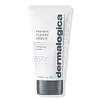What's inside
What's inside
 Key Ingredients
Key Ingredients

 Benefits
Benefits

 Concerns
Concerns

 Ingredients Side-by-side
Ingredients Side-by-side

Water
Skin ConditioningEthylhexyl Hydroxystearate
EmollientButylene Glycol
HumectantCetearyl Ethylhexanoate
EmollientCetyl Caprylate
EmollientStearic Acid
CleansingPEG-8
HumectantOctyldodecanol
EmollientDimethicone
EmollientGlyceryl Stearate Se
EmulsifyingPEG-100 Stearate
Sodium Hyaluronate
HumectantHydrolyzed Sodium Hyaluronate
Skin ConditioningSodium Ascorbyl Phosphate
AntioxidantChlorella Vulgaris Extract
Skin ConditioningCeramide NP
Skin ConditioningPhytosterols
Skin ConditioningCentella Asiatica Extract
CleansingLinoleic Acid
CleansingEchinacea Purpurea Extract
MoisturisingAloe Barbadensis Extract
Skin ConditioningPalmitic Acid
EmollientMyristic Acid
CleansingRosa Centifolia Extract
Skin ConditioningLactic Acid
BufferingLinolenic Acid
CleansingPropanediol
SolventTocopherol
AntioxidantPotassium Cetyl Phosphate
EmulsifyingHelianthus Annuus Seed Oil
EmollientTetrasodium Glutamate Diacetate
Ethylhexylglycerin
Skin ConditioningCetyl Alcohol
EmollientCarbomer
Emulsion StabilisingHydroxystearic Acid
CleansingAminomethyl Propanol
BufferingSodium Hydroxide
BufferingPhenoxyethanol
PreservativeWater, Ethylhexyl Hydroxystearate, Butylene Glycol, Cetearyl Ethylhexanoate, Cetyl Caprylate, Stearic Acid, PEG-8, Octyldodecanol, Dimethicone, Glyceryl Stearate Se, PEG-100 Stearate, Sodium Hyaluronate, Hydrolyzed Sodium Hyaluronate, Sodium Ascorbyl Phosphate, Chlorella Vulgaris Extract, Ceramide NP, Phytosterols, Centella Asiatica Extract, Linoleic Acid, Echinacea Purpurea Extract, Aloe Barbadensis Extract, Palmitic Acid, Myristic Acid, Rosa Centifolia Extract, Lactic Acid, Linolenic Acid, Propanediol, Tocopherol, Potassium Cetyl Phosphate, Helianthus Annuus Seed Oil, Tetrasodium Glutamate Diacetate, Ethylhexylglycerin, Cetyl Alcohol, Carbomer, Hydroxystearic Acid, Aminomethyl Propanol, Sodium Hydroxide, Phenoxyethanol
Water
Skin ConditioningGlycerin
HumectantPropanediol
SolventDimethicone
EmollientIsononyl Isononanoate
EmollientHydroxyethylpiperazine Ethane Sulfonic Acid
BufferingPhenoxyethanol
PreservativeCarbomer
Emulsion StabilisingButylene Glycol
HumectantChlorphenesin
AntimicrobialCaprylyl Glycol
EmollientDimethiconol
EmollientSodium Hydroxide
BufferingXanthan Gum
EmulsifyingPentylene Glycol
Skin ConditioningTetrasodium EDTA
Tocopheryl Acetate
AntioxidantMenthoxypropanediol
MaskingPseudoalteromonas Ferment Extract
HumectantBiosaccharide Gum-1
HumectantSarcosine
Skin ConditioningSalicylic Acid
MaskingWater, Glycerin, Propanediol, Dimethicone, Isononyl Isononanoate, Hydroxyethylpiperazine Ethane Sulfonic Acid, Phenoxyethanol, Carbomer, Butylene Glycol, Chlorphenesin, Caprylyl Glycol, Dimethiconol, Sodium Hydroxide, Xanthan Gum, Pentylene Glycol, Tetrasodium EDTA, Tocopheryl Acetate, Menthoxypropanediol, Pseudoalteromonas Ferment Extract, Biosaccharide Gum-1, Sarcosine, Salicylic Acid
 Reviews
Reviews

Ingredients Explained
These ingredients are found in both products.
Ingredients higher up in an ingredient list are typically present in a larger amount.
Butylene Glycol (or BG) is used within cosmetic products for a few different reasons:
Overall, Butylene Glycol is a safe and well-rounded ingredient that works well with other ingredients.
Though this ingredient works well with most skin types, some people with sensitive skin may experience a reaction such as allergic rashes, closed comedones, or itchiness.
Learn more about Butylene GlycolCarbomer is a polymer of acrylic acid. Its main role is to create a gel consistency.
A high amount of carbomer can cause pilling or balling up of products. Don't worry, most products contain 1% or less of carbomer.
Dimethicone is a type of synthetic silicone created from natural materials such as quartz.
What it does:
Dimethicone comes in different viscosities:
Depending on the viscosity, dimethicone has different properties.
Ingredients lists don't always show which type is used, so we recommend reaching out to the brand if you have questions about the viscosity.
This ingredient is unlikely to cause irritation because it does not get absorbed into skin. However, people with silicone allergies should be careful about using this ingredient.
Note: Dimethicone may contribute to pilling. This is because it is not oil or water soluble, so pilling may occur when layered with products. When mixed with heavy oils in a formula, the outcome is also quite greasy.
Learn more about DimethiconePhenoxyethanol is a preservative that has germicide, antimicrobial, and aromatic properties. Studies show that phenoxyethanol can prevent microbial growth. By itself, it has a scent that is similar to that of a rose.
It's often used in formulations along with Caprylyl Glycol to preserve the shelf life of products.
Propanediol is an all-star ingredient. It softens, hydrates, and smooths the skin.
It’s often used to:
Propanediol is not likely to cause sensitivity and considered safe to use. It is derived from corn or petroleum with a clear color and no scent.
Learn more about PropanediolSodium Hydroxide is also known as lye or caustic soda. It is used to adjust the pH of products; many ingredients require a specific pH to be effective.
In small amounts, sodium hydroxide is considered safe to use. However, large amounts may cause chemical burns due to its high alkaline.
Your skin has a natural pH and acid mantle. This acid mantle helps prevent harmful bacteria from breaking through. The acid mantle also helps keep your skin hydrated.
"Alkaline" refers to a high pH level. A low pH level would be considered acidic.
Learn more about Sodium HydroxideWater. It's the most common cosmetic ingredient of all. You'll usually see it at the top of ingredient lists, meaning that it makes up the largest part of the product.
So why is it so popular? Water most often acts as a solvent - this means that it helps dissolve other ingredients into the formulation.
You'll also recognize water as that liquid we all need to stay alive. If you see this, drink a glass of water. Stay hydrated!
Learn more about Water